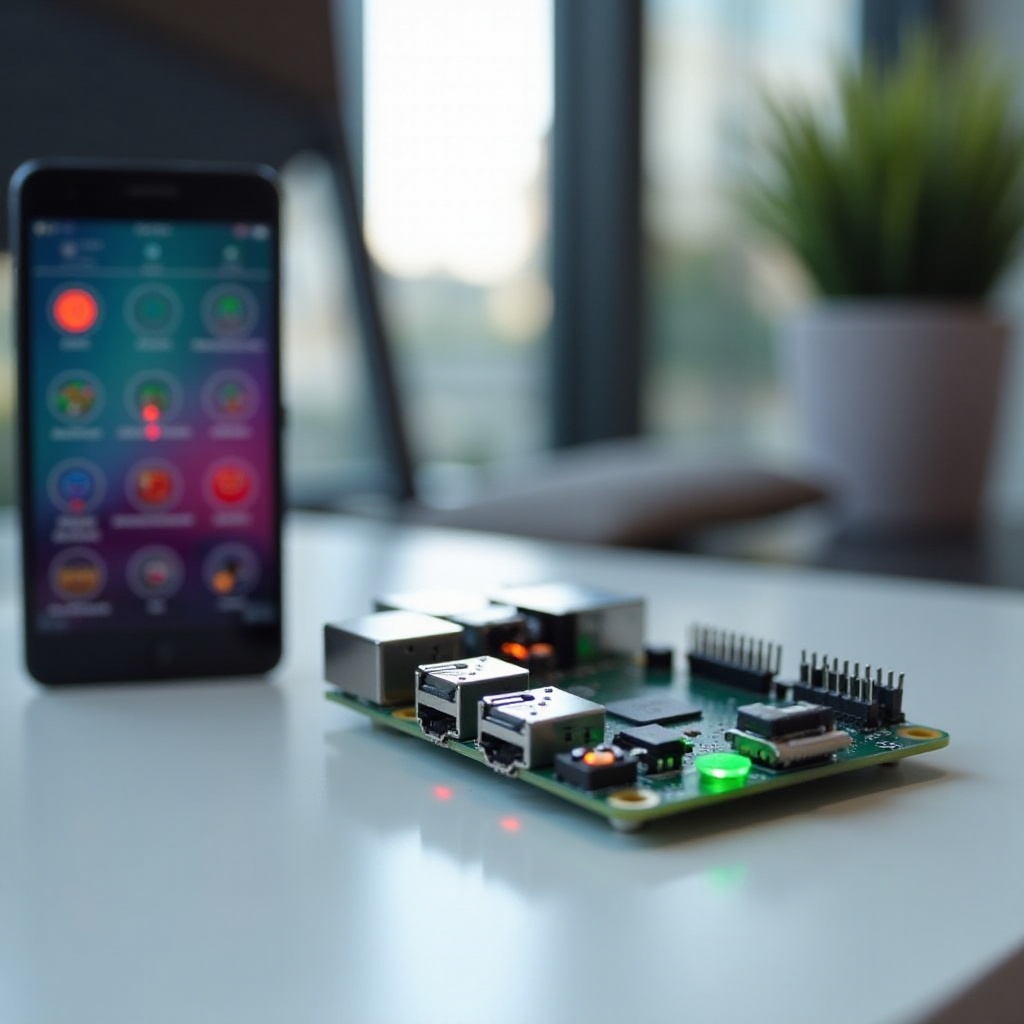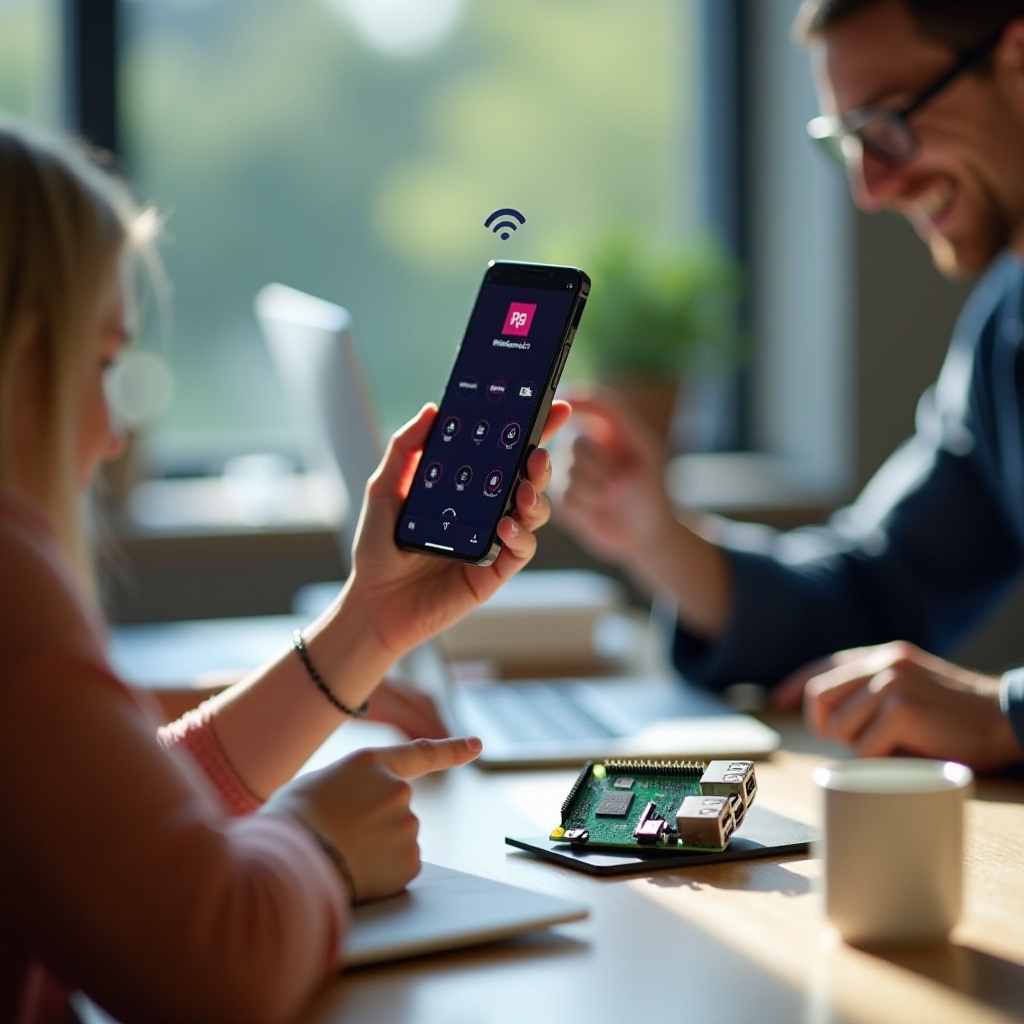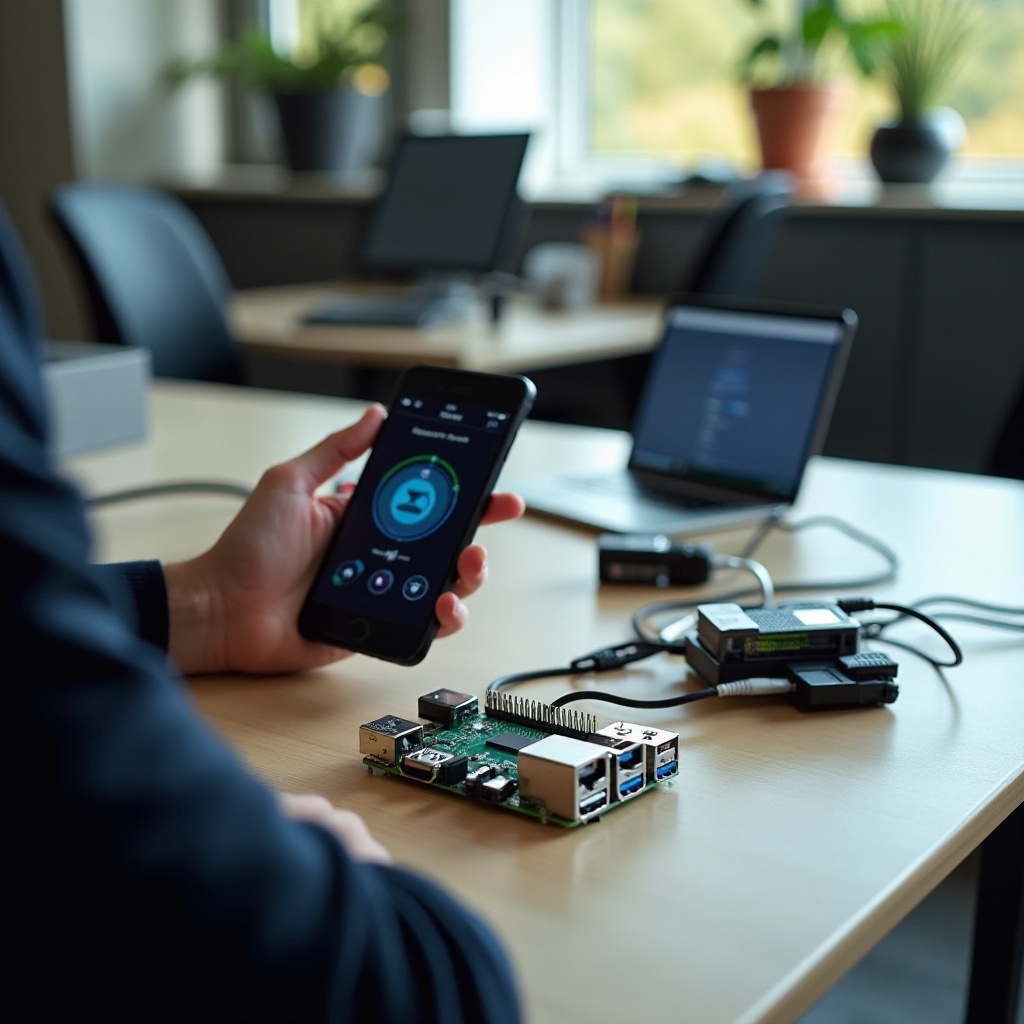Introduction
Using a Raspberry Pi 3 can prove to be an exhilarating experience, especially when you can control this small yet powerful device directly from your smartphone. This flexibility can enhance your productivity or contribute to an exciting project. In this comprehensive guide, we will take you through the various steps required to control Raspberry Pi 3 from your phone. From preparing the Pi and choosing the right app to actual setup and usage, let’s embark on this journey toward seamless remote access.

Preparing Your Raspberry Pi 3
Before you can control your Raspberry Pi 3 remotely, you need to ensure it’s properly set up and connected to your network.
Installing the Operating System
Start by installing the operating system on your Raspberry Pi. The most commonly used OS is Raspberry Pi OS. You can download the image from the official Raspberry Pi website and use software like balenaEtcher to flash the image onto a microSD card. Insert the card into your Raspberry Pi and power it on.
Network Configuration
For remote access, the Raspberry Pi must be connected to the same network as your phone. You can do this by connecting an Ethernet cable or setting up Wi-Fi. Ensure the device is assigned a static IP address to make remote connections more reliable.
Choosing the Right Remote Control App
There are various remote control applications available for controlling your Raspberry Pi from a phone. Selecting the right one depends on your requirements and preferences.
Overview of Popular Apps
- VNC Viewer: Provides a graphical interface and is user-friendly.
- JuiceSSH: Ideal for command line access and programming tasks.
- AnyDesk: Offers smooth remote desktop functionality.
Pros and Cons of Each App
- VNC Viewer:
- Pros: Easy to set up, widely used.
- Cons: May experience lag over slow connections.
- JuiceSSH:
- Pros: Robust and stable for command-line interface, extensive feature set.
- Cons: No graphical interface.
- AnyDesk:
- Pros: Optimized for speed, secure connections.
- Cons: Some features locked behind paywalls.

Setting Up Remote Access Software
Setting up remote access software on your Raspberry Pi allows your phone to interface with it seamlessly. Let’s explore different methods and software options.
Installing Remote Desktop Protocol (RDP)
- Open the terminal on your Raspberry Pi.
- Install RDP:
sudo apt-get install xrdp - Start the service:
sudo systemctl enable xrdp
sudo systemctl start xrdp
Setting Up VNC Server
- Install VNC Server:
sudo apt-get update
sudo apt-get install realvnc-vnc-server - Enable VNC service:
sudo systemctl enable vncserver-x11-serviced.service
sudo systemctl start vncserver-x11-serviced.service - Configure VNC Server settings via the graphical user interface.
Configuring TeamViewer or AnyDesk
- Download the respective installer from the official websites.
- Install the software:
sudo dpkg -i teamviewer.deb
or
sudo dpkg -i anydesk.deb - Set up the application using the graphical interface to enable connections.
Connecting Your Phone to Raspberry Pi 3
Once the remote access software is set up, the next step is connecting your phone to the Raspberry Pi.
Using VNC Viewer
- Install VNC Viewer on your phone from the app store.
- Open the app and add a new connection.
- Enter the Raspberry Pi’s IP address and any required authentication.
- Connect to see your Raspberry Pi desktop on your phone.
Using Remote Desktop Apps
- Install a remote desktop app like Microsoft Remote Desktop.
- Add a new connection using the Raspberry Pi’s IP address.
- Authenticate and connect to access your Raspberry Pi’s interface.
Troubleshooting Common Connection Issues
- Check if your Raspberry Pi is powered on and connected to the network.
- Ensure that remote access software is running properly.
- Verify IP addresses and credentials.
- Restart your router if connectivity issues persist.
Remote Control Features and Usage
Controlling your Raspberry Pi from your phone opens up several functionalities and uses. With a successful connection set up, you can fully explore the capabilities.
Navigating the Raspberry Pi Desktop from Your Phone
Once connected, you can navigate the Raspberry Pi desktop as if you’re using a regular computer. Open and close applications, manage files, and perform system configurations.
Using Your Phone as a Keyboard and Mouse
Remote control apps often allow your phone to function as a virtual keyboard and mouse, enhancing your control capabilities. Tap and swipe gestures typically replicate mouse clicks and movements.
Advanced Features and Settings
Explore advanced settings in the remote access apps to fine-tune your experience. Customize resolution, optimize for better performance, and set up additional security measures.

Security and Maintenance Tips
Maintaining the security and efficiency of your Raspberry Pi is crucial, especially when it’s accessible remotely.
Ensuring Secure Connections
- Use strong passwords and enable two-factor authentication if possible.
- Regularly update your remote access software to patch vulnerabilities.
- Consider setting up a VPN for secure connections over the internet.
Regular Updates and Patches
- Keep your Raspberry Pi OS and installed software up to date.
- Schedule regular maintenance to ensure optimal performance and security.
Conclusion
Controlling your Raspberry Pi 3 from a phone is not only convenient but also expands your capabilities. By following this guide, you can set up and start controlling your Pi with ease, broadening your project potential. Enjoy the flexibility and convenience of remote access anytime, anywhere.
Frequently Asked Questions
What kind of apps are compatible with my phone for controlling Raspberry Pi 3?
Apps like VNC Viewer, JuiceSSH, and AnyDesk are compatible for remote control from both Android and iOS devices.
How do I resolve connection issues with my Raspberry Pi 3?
Ensure both devices are on the same network, that the Raspberry Pi is powered and connected, and verify IP addresses.
Is it safe to control Raspberry Pi 3 over the internet?
With proper security measures like strong passwords and VPNs, controlling your Pi over the internet can be safe.